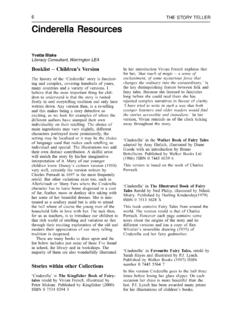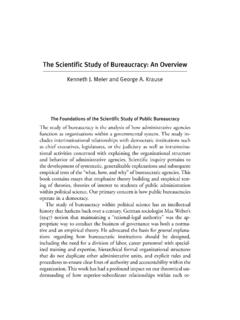Transcription of The Truth On Halloween
1 NOTES. Halloween . A time for children to dress up in costumes and go door-to-door shouting Trick or Treat as they beg for candy treats - threatening mischief if not appeased. A time for adults to decorate their house with spooky images, party the night away, dress in costumes and even to be excused for acting a little silly. Is Halloween harmless? Where does it come from? Have you ever delved into the history behind Halloween or All Hallows Eve as it is also called? Let's find out a bit about this day of fun . Most scholars believe that the observance is derived from ancient Celtic practices centered around Samhain [pronounced Sow-een], the pagan end of the year harvest festival which gave thanks to the pagan sun-god for the harvest at the end of summer and welcomed the new year.
2 Samhain means "Hallow-tide" (the holiday), probably from roots meaning "summer's end". [source: McBain's Etymological Dictionary of the Gaelic Language]. Encyclopedia Britannica says: Halloween , also called All Hallows' Eve or All Hallows' Evening, a holy or hallowed evening observed on October 31, the eve of All Saints' Day. In modern times, it is the occasion for pranks and for children requesting treats or threatening tricks. In ancient Britain and Ireland, the Celtic festival of Samhain eve was observed on October 31, at the end of summer. This date was also the eve of the new year in both Celtic and Anglo-Saxon times and was the occasion for one of the ancient fire festivals when huge bonfires were set on hilltops to frighten away evil spirits. The date was connected with the return of herds from pasture, and laws and land tenures were renewed.
3 The souls of the dead were supposed to revisit their homes on this day, and the autumnal festival acquired sinister significance, with ghosts, witches, hobgoblins, black cats, fairies, and demons of all kinds said to be roaming about. It was the time to placate the supernatural powers controlling the processes of nature. In addition, Halloween was thought to be the most favorable time for divinations concerning marriage, luck, health, and death. It was the only day on which the help of the devil was invoked for such purposes. The Celts believed in the pagan doctrine of an Immortal soul and Samhain was a time when the veil between the world of the Living and the world of the Dead became very thin and ghosts and spirits were free to wander as they wished passing between the two worlds.
4 The Celtic priests or Druids, pagan orders in Britain, Ireland and Gaul, generally performed their rituals by offering sacrifices, usually of animals, but sometimes of humans, in order to placate the gods; ensuring that the sun would return after the winter; and frightening away evil spirits. BONFIRES. To the Celtics, the bonfire represented the sun and was used to aid the white magic Druid in his fight with dark powers. The term bonfire or bane-fire comes from the words "bone fire," literally meaning the bones of the sacrifices that were piled in a field with timber and set ablaze. Samhain is a time for getting rid of weakness, as pagans once slaughtered weak animals, which were unlikely to survive the winter, and burnt them to their pagan gods as a burnt offering.
5 The practice of burning humans was stopped around 1600, and an effigy or human-like figure was sometimes burned instead. This practice continues in some cults today. When Catholicism began to spread through Europe in the third and fourth centuries the pagan temples were torn down, yet pagan worship never completely disappeared. The festival of Samhain remained a primary pagan festival. Belief in spirits may have waned, but many of the old Samhain traditions continued to be practiced especially by the children. Primarily in Ireland, children dressed as evil spirits went from house to house demanding a treat. If they received none, they performed an unwelcome trick. DIVINATION. Those who practiced fortune telling and divination believed that this was the night that they had the most success.
6 They called upon dark spiritual forces to bless their efforts. One form of divination was to put apples in a tub and bob for them. [A variant was Snap Apple where the apple was suspended by a string instead.]. The current game dates back to when the Romans conquered Britain, bringing with them the apple tree, a representation of the goddess of fruit trees and fertility, Pomona. The combination of Pomona and the Celts'. belief that the pentagram was a fertility symbol began the origins of bobbing for apples. When an apple is sliced in half, the seeds form a pentagram- like shape, and it is thought that the Pomona the fertility goddess manifestation of such a symbol meant that the apple could be used to determine marriages during this time of year. From this belief comes the game bobbing for apples.
7 During the annual celebration, young unmarried people try to bite into an apple floating in water or hanging from a string; the first person to bite into the apple would be the next one to be allowed to marry. In some variations, a woman would peel the apple while gazing in a mirror by candlelight and throw the peeling over their shoulders and then quickly look around. They expected to see a vision or an apparition of the one they were to marry. Others expected to see the apple peel fall in the shape of the letter of the first initial of their prospective lover. BLACK CATS. The history of the black cat as an evil symbol originates in ancient Babylonian and Hebrew mythology, which often portrayed them coiled up like another symbol of evil, the serpent. Is it any wonder, then, that the black cat should be associated with witchcraft as well?
8 The black cat was once thought of as a familiar of witches and some cultures believed that witches could change into cats. Some believed that witches could make this witch to cat transformation nine times, which may be the reason cats are still said to have nine lives. Greek mythology also offers ancient evidence of the black cat's association to evil. In Greek mythology a woman named Galenthias was changed into a cat and became a priestess at the temple of Hecate, the "Dark Mother". Hecate was also known as the Mother of Witchcraft. There are folk tales about black cats all around the world. The Celtic people believed the black cat was a reincarnated being capable of divining the future. Germans of the Middle Ages believed that a black cat was an omen for death if it jumped on the bed of an ill person.
9 The Normans thought that if a black cat crossed your path in the moonlight, you were destined to die in an epidemic. The Chinese believed that black cats could foretell poverty and sickness. In Finland, the black cat was thought to carry dead souls to the next world. In India, to liberate a reincarnated soul, a black cat was thrown into a furnace. Ignorance breeds superstition, and the superstition surrounding the black cat is nearly as rampant as the paganism of today. Black cats, of themselves, are not evil, in fact being a creation of God, they make good pets and do not deserve to be associated with this evil holiday. WITCHES. The roots and history of witchcraft are varied through many cultures including the ancient Celtic people. Witches worshipped the creation more than the Creator.
10 [cf Romans 1:25] They respected and revered . ( worshipped) the cycles of life and the Earth, including the phases of the moon, the changing seasons and birth and death. The Witch is one of the more enduring symbols of Halloween , horror and folklore. Ugly and evil, they are shown flying on their broomsticks, or stirring their cauldrons. Witches were not always thought of as evil or ugly but looked upon to be healers or wise women of the pagan communities. Witches today are sometimes mistakenly thought to be strictly with the Wiccan religion begun by Gerald Gardner in the 1950's. However, not all witches are Wiccan (an old English word for witch).. many do not feel bound to any religion at all. This pagan religion is an offshoot of the ancient Celtic witchcraft of Wales, Scotland and Ireland.






